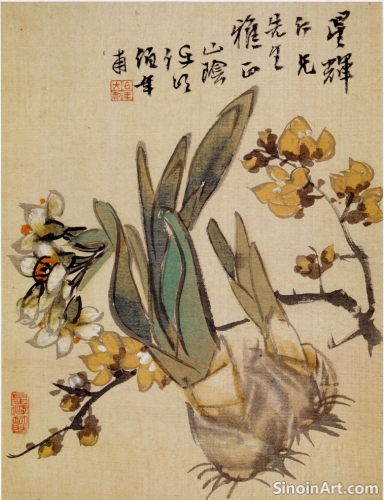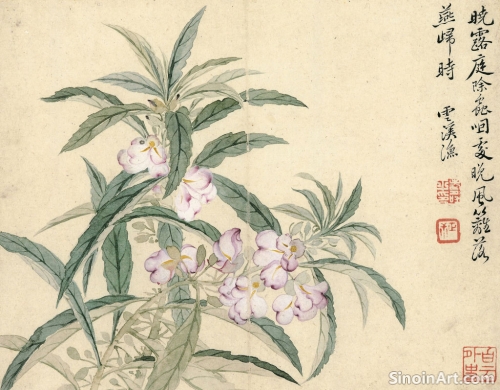Gongbi Portraiture: Capturing the Essence of the Subject
|
While often associated with flowers, birds, and landscapes, Gongbi is also used to create stunningly detailed and expressive portraits. Gongbi portraiture, with its meticulous brushwork, precise lines, and delicate color layering, aims to capture not only the physical likeness of the subject but also their inner character and essence. This style allows the artist to create both a realistic and a psychological portrait.  The meticulous detail that defines Gongbi painting is particularly evident in portraiture. Every line, every subtle change in color, is carefully rendered to accurately depict the subject’s features and expressions. The details, such as hair, clothing, and accessories, are rendered with remarkable realism. This creates a likeness that goes beyond just a simple representation of the subject.  The use of line in Gongbi portraiture is essential for capturing the bone structure, muscle tone, and unique features of the face. The “gougou” method, with its precise outlines, is critical for achieving the accuracy and clarity that are hallmarks of the art form. The control of line is critical in capturing the defining characteristics of the subject.  Beyond mere likeness, Gongbi portraiture also aims to capture the inner essence of the subject. Through careful observation and understanding of the person’s character, the artist seeks to convey their personality, emotions, and state of mind. The use of subtle details and expression create a psychological impact on the viewer. The application of color is also crucial for conveying the mood and character of the subject. Delicate layers of color are used to create depth, volume, and a lifelike appearance. The specific color palette used often reflects the subject's personality and status. Gongbi portraiture is a demanding art form that requires a high level of skill and artistry. It is not merely about technical accuracy, but also about the artist's ability to connect with the subject and communicate their inner life through a visual representation. These portraits often require many sittings with the subject and an understanding of their character. |
Tag : Gongbi portraiture, Chinese portrait art, traditional portrait painting, figure painting, capturing likeness
Related information
- Gongbi and the Depiction of Water: Capturing the Flow and Spirit
- The Use of Gilding and Metallic Pigments in Gongbi
- The Delicate Dance of the Brush: An Introduction to Gongbi
- Techniques and Tools: Unveiling the Secrets of Gongbi
- The Exquisite World of Gongbi: A Detailed Introduction
This article explores the depiction of water in Gongbi painting, highlighting the techniques used to capture its flow and movement, the use of color to suggest its depth, symbolic significance, and how it enhances the overall sense of harmony and balance within the artwork.
This article explores the use of gilding and metallic pigments in Gongbi painting, highlighting how these elements add a sense of luxury, luminosity, and symbolic meaning, while also requiring a high degree of skill and precision in their application.
This article introduces Gongbi painting, a meticulous Chinese art form characterized by its detailed and realistic depictions, outlining its history, techniques, and contemporary relevance.
An in-depth look at the techniques and tools used in Gongbi painting, covering brushes, ink, pigments, and painting surfaces.
A comprehensive introduction to Gongbi painting, highlighting its detailed nature, historical significance, common subjects, and continued relevance.